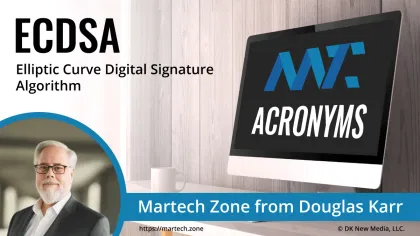ECDSA
ECDSA is the Acronym for Elliptic Curve Digital Signature Algorithm

Few algorithms have gained as much prominence in recent years as the Elliptic Curve Digital Signature Algorithm, commonly known as ECDSA. This cryptographic marvel stands at the intersection of complex mathematics and practical security, offering a robust method for creating digital signatures that are both highly secure and remarkably efficient.
To understand ECDSA, we must first grasp the concept of digital signature algorithms (DSA). In our increasingly digital world, the need for a way to verify the authenticity and integrity of electronic documents or messages has become paramount. Digital signatures serve this purpose as the electronic equivalent of a handwritten signature or seal. They provide a means to ensure that a message or document is genuine and hasn’t been tampered with, a crucial requirement in many areas, from secure communications to financial transactions.
ECDSA is a specific approach to creating digital signatures that leverages the mathematical properties of elliptic curves. But why elliptic curves? The answer lies in their unique characteristics, which make them particularly well-suited for cryptographic applications.
Elliptic curves, despite their name, are not ellipses. They are algebraic curves that, when plotted, produce a distinctive symmetrical shape. The mathematical properties of these curves allow for the creation of cryptographic systems that offer equivalent security to traditional systems (like RSA) but with much smaller key sizes. This efficiency is one of the primary reasons for ECDSA’s growing popularity.
At its core, ECDSA works by performing operations on points along an elliptic curve. The algorithm uses a private key (known only to the signer) and a public key (which can be freely shared) derived from this private key. The magic of elliptic curve cryptography lies in that while it’s relatively easy to perform these point operations in one direction, it’s computationally infeasible to reverse them. This property, known as the discrete logarithm problem, forms the basis of ECDSA’s security.
The process of creating an ECDSA signature involves several steps:
- The signer generates a random number k.
- This number is used to compute a point R on the elliptic curve.
- The x-coordinate of R is then used, along with the message hash and the signer’s private key, to compute the signature.
The resulting signature consists of two numbers, often referred to as r and s. To verify the signature, one would use the signer’s public key and r and s to perform calculations that should result in the original point R. If the calculations match, the signature is valid.
One of ECDSA’s most significant advantages is its efficiency. Compared to older algorithms like RSA, ECDSA can provide the same level of security with much smaller key sizes. For example, a 256-bit ECDSA key offers comparable security to a 3072-bit RSA key. This efficiency translates to faster computations, lower power consumption, and reduced storage requirements – all crucial factors in mobile devices and Internet of Things (IoT) applications.
ECDSA’s strengths have led to its widespread adoption. It’s used in various cryptocurrencies, including Bitcoin, for transaction signing. Many secure communication protocols, such as Transport Layer Security (TLS), offer ECDSA as an option for key exchange and authentication. It’s also found applications in secure boot processes for hardware devices and in code signing for software distribution.
However, like all cryptographic systems, ECDSA is not without its challenges. Its security relies heavily on the quality of the random number generation used in creating signatures. Poor randomness can lead to vulnerabilities, allowing an attacker to recover the private key. This underscores the importance of adequately implemented, cryptographically secure random number generators in ECDSA implementations.
Another consideration is the choice of the specific elliptic curve used. Not all curves are created equal in terms of security, and there has been some controversy over certain curves recommended by the National Institute of Standards and Technology (NIST). This has led to some in the cryptographic community to develop and adopt alternative curves.
Looking to the future, ECDSA faces both opportunities and challenges. On one hand, its efficiency makes it well-suited for emerging technologies like IoT devices and blockchain applications. On the other hand, the looming threat of quantum computing poses a significant challenge to many current cryptographic systems, including ECDSA.
Quantum computers, if realized at a sufficient scale, could solve the discrete logarithm problem much more quickly than classical computers, potentially undermining the security of ECDSA. This has spurred research into post-quantum cryptography, seeking algorithms that would remain secure despite quantum computing advances.
ECDSA represents a significant advancement in the field of digital signatures. Its combination of strong security and computational efficiency has made it a popular choice across various applications. As we continue to rely more heavily on digital systems for sensitive operations, the importance of robust digital signature algorithms like ECDSA only grows. While challenges remain, particularly in the face of advancing computing technologies, ECDSA continues to play a crucial role in securing our digital world. Understanding this algorithm and its implications is key for anyone involved in cybersecurity, cryptography, or developing secure systems in our increasingly interconnected world.